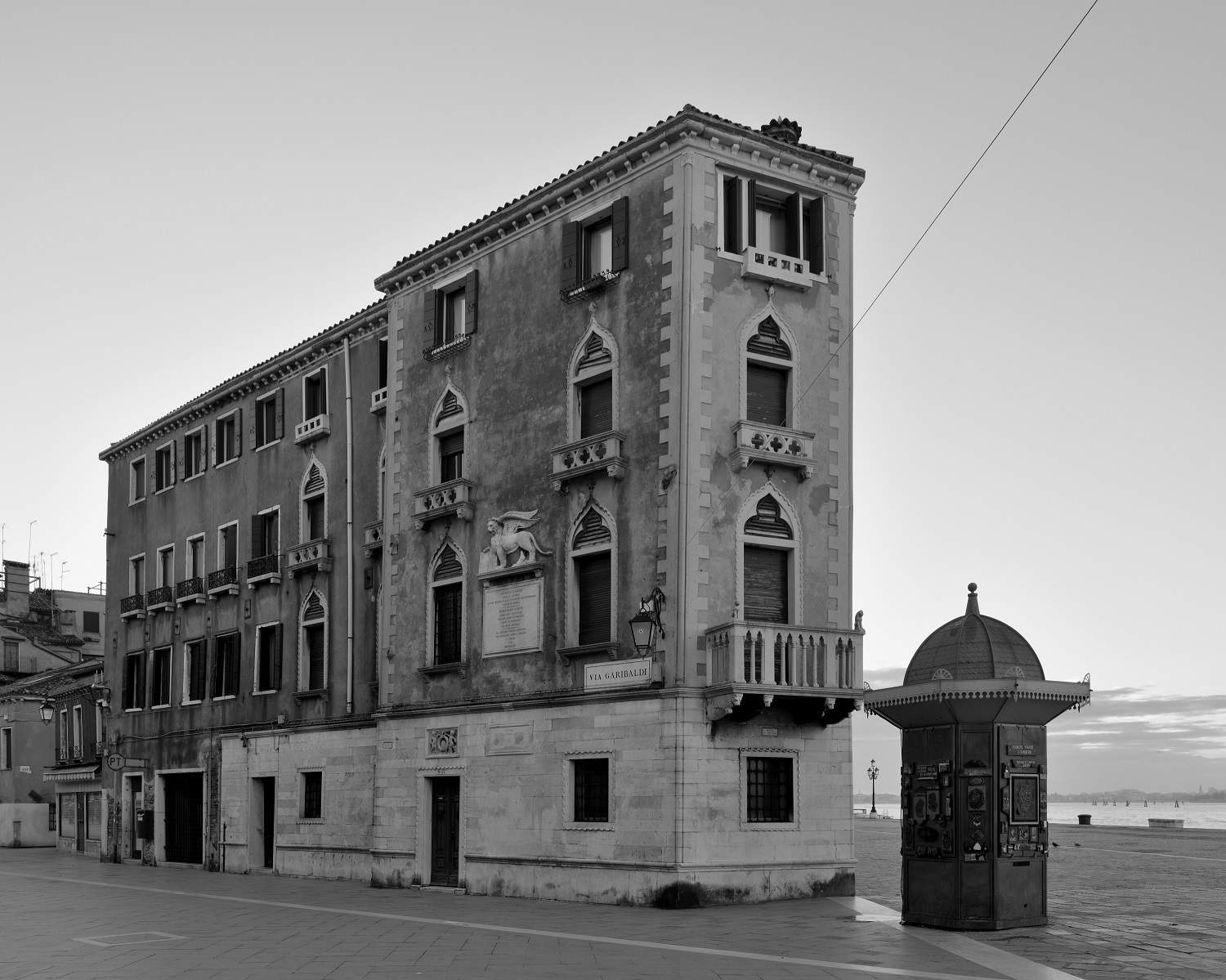After six months of construction, Palazzo Grassi reopens with an exhibition on Venice in black and white
In Venice, Palazzo Grassi reopens its doors, after six months of maintenance work, with the exhibition HYPERVENEZIA, entirely dedicated to the city on the occasion of the 1,600th anniversary of its founding: for the first time, the ambitious Venice Urban Photo Project, conceived and realized by Mario Peliti (Rome, 1958), architect, publisher and gallery owner, founder in 1986 of Peliti Associati (initially a graphic design studio, then a publishing house, and since 2000 also a public relations agency), and director from 1995 to 2002 of the Minima Peliti Associati Gallery, dedicated to art photography (with an activity which in seven years proposed forty-three exhibitions presenting works by Sebastião Salgado, Gianni Berengo Gardin, Gabriele Basilico, Mario Giacomelli, Mary Ellen Mark, Bert Stern, and other important artists) and finally, since 2013, together with Paola Stacchini Cavazza, founder of the Galleria del Cembalo in Rome, dedicated again to photography and its relationship with other forms of artistic expression.
The exhibition HYPERVENEZIA, running from Sept. 5, 2021 to Jan. 9, 2022, curated by Matthieu Humery, curator at the Collection Pinault, offers an immersive journey on the first exhibition floor of Palazzo Grassi around three installations: a linear path of about 400 photographs tracing an ideal itinerary through the sestieri of Venice, a site-specific map of the city composed of a mosaic of about 900 geolocated images offering an overview of Venice, and a video installation of more than 3.000 flowing photographs accompanied by an unreleased musical composition created for the exhibition by renowned musician and composer Nicolas Godin, a member of the electronic music duo “Air.” Beginning in 2006, Peliti began systematically mapping the city of Venice with his photographs, with the aim of collecting the largest and most organic archive of images of the city ever made, and to return an unprecedented representation of the entire urban fabric in its complexity and continuity. To date, the photographic archive has more than 12,000 shots, all in black and white, taken under the same light conditions, with no shadows brought in, and in the absence of people. These seemingly minor aspects are intended to give temporal unity to the perception of the city. The homogeneity of light makes visible all the details of the facades, even the less relevant ones, and the absence of people forces the observer to reflect on the possible fate of the city: a city without inhabitants. At the same time, the silence that pervades thousands of photographs offers Venice itself a chance to show itself in its urban and architectural articulation.
HYPERVENEZIA aims to offer a radical visual experience: the Venice we know disappears and allows a parallel, empty, timeless Venice to emerge. From the Serenissima presented in its pure materiality emanates this eerie strangeness that characterizes any city left without inhabitants. The Venice Urban Photo Project, launched in 2006, first in film and since 2013 in digital format, recovers the methodological and formal rigor of the great campaigns of the masters of the nineteenth and twentieth centuries (from Charles Marville to Eugène Atget, from Gabriele Basilico to John Davies) in order to return a perception, as comprehensive as possible, of the city as it appears at the beginning of the new millennium. The peculiarity of this archive is represented not only by its size, but also by the homogeneity of the vision, the consistency of the shooting methods and the continuous deepening in the author’s knowledge of the city.
The conclusion of the photographic reconnaissance is scheduled for 2030. At the end of 2018, an agreement was signed between Mario Peliti, the Istituto Centrale per il Catalogo e la Documentazione (ICCD), and the Soprintendenza Archeologia, Belle Arti e Paesaggio for the metropolitan area of Venice, aimed at enhancing the Venice Urban Photo Project through the creation of a digital fund(Venice Urban Photo Archive) at the ICCD. HYPERVENEZIA is realized with the support of Saint Laurent and is part of the calendar of initiatives dedicated to the celebration of the 1600th anniversary of the city of Venice.
Image: Venice Urban Photo Project / Mario Peliti. Castello, Via Garibaldi, 2015
 |
| After six months of construction, Palazzo Grassi reopens with an exhibition on Venice in black and white |
Warning: the translation into English of the original Italian article was created using automatic tools. We undertake to review all articles, but we do not guarantee the total absence of inaccuracies in the translation due to the program. You can find the original by clicking on the ITA button. If you find any mistake,please contact us.



























